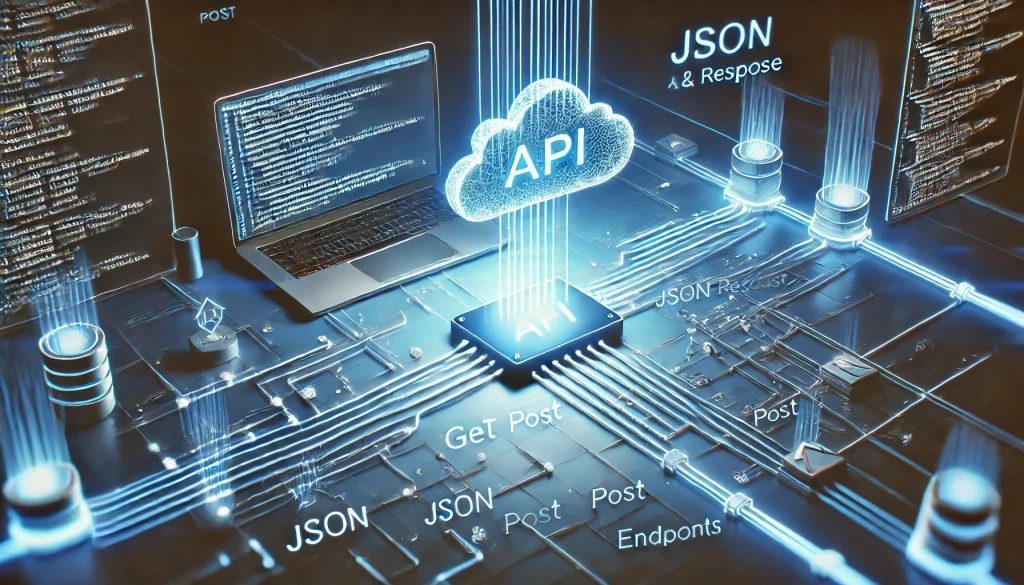APIs (Application Programming Interfaces) allow different software systems to communicate with each other. Whether you’re integrating third-party services, fetching data, or automating workflows, building an API connection is an essential skill. This guide will walk you through the process of establishing an API connection.
Step 1: Understand the API Requirements
Before you start coding, it’s crucial to understand the API documentation. Look for the following details:
Authentication Method: APIs often require authentication via API keys, OAuth, or tokens.
Endpoint URLs: These are the addresses where API requests should be sent.
Request Methods: Common HTTP methods include
GET,POST,PUT, andDELETE.Request Headers & Parameters: Some APIs require specific headers or query parameters.
Response Format: APIs return data in formats like JSON or XML
Step 2: Generate an API Key or Access Token
Most APIs require authentication. Follow these steps:
Sign up for an API provider account. After creating and activating Login ID you may need to create an OAuth API ID. Always check the API documentation.
Generate API credentials (API key, client ID, client secret, or access token).
Store credentials securely, avoiding hardcoding them in your script.
For OAuth-based APIs, you may need to generate a bearer token using a token URL.
Python scripts to generate api access token
# In this case, we want to build a connectivity with cmegroup.com to get access products.json and first step would be to generate a token.
import subprocess
import json, os
# Credentials (DO NOT SHARE PUBLICLY)
CLIENT_ID = “XXXXXXXXXXXXX”
CLIENT_SECRET = “AAAAAAAAAAAAAAAAAA”
TOKEN_URL = “https://auth.cmegroup.com/as/token.oauth2”
Get Access Token
curl_command = [
“curl”,
“-X”, “POST”,
TOKEN_URL,
“-H”, “Content-Type: application/x-www-form-urlencoded”,
“-d”, f”grant_type=client_credentials&client_id={CLIENT_ID}&client_secret={CLIENT_SECRET}”
]
result = subprocess.run(curl_command, capture_output=True, text=True, encoding=”utf-8″)
# Parse JSON response
try:
token_response = json.loads(result.stdout)
ACCESS_TOKEN = token_response.get(“access_token”)
if ACCESS_TOKEN:
print(“Access Token:”, ACCESS_TOKEN)
else:
print(“Error: No access token received”)
print(“Response:”, result.stdout)
exit()
except json.JSONDecodeError:
print(“Error: Failed to get token”)
print(“Response:”, result.stdout)
exit()
Access Token Genetated
Access Token: eyJhbGciOiJSUzI1NiIsImtpZCI6ImIxbE9sa1ptd2x0bUVFbVY2TXU2dl9kRmJ5QSIsInBpLmF0bSI6IjEifQ.eyJzY29wZSI6W10sImNsaWVudF9pZCI6ImFwaV9jbWVfc2NvdGlhIiwiYXVkIjoiUHJvZCIsImp0aSI6IjdrUTEwTHVsbFdWQUp5UlgiLCJzdWIiOiJhcGlfY21lX3Njb3RpYSIsImV4cCI6MTc0MzI3OTA1Nn0.SvT6k4MFbK98Q7p63y5nKQ4a3kb1fTbzFJIMTQ9XrFrCklkLVTw3cB0a_OV9t5iRmCrA64qEKC1EhfbuJHKWWxV739QTYczqaRbJBdYqrghrZIfuO5PPcL9k6SXOftPpAHmAbjG90-gAD0bSBTobzZ9C5FRMR4ggmQPDZ0PBSffdu6FcZ8RmoDs--U0wUHxWnn4IypR9PEmQaeSZ4NgIFSTxgavxt2AqeulY82po_8Q7ulcovDEcKApvqDoqiNQzPiswqYK9_mKi8cjL_i9QHxWTjXYrw93Bq84v6bbSDPPSNxCFXL4ThD00mctb1qS7HYr5WGco3U-6U9ZcHIQyGQ
API access tokens are typically valid for only a few hours or days due to security best practices. Here’s why and how to renew them:
Why Are Tokens Short-Lived?
Security – If a token is stolen, a short lifespan limits the attacker’s access window.
Reduced Risk – Even if leaked, the token expires quickly, minimizing damage.
Dynamic Permissions – Ensures tokens reflect the latest user permissions.
Compliance – Many security standards (OAuth 2.0, OpenID Connect) recommend short-lived tokens.


This is really helpful.